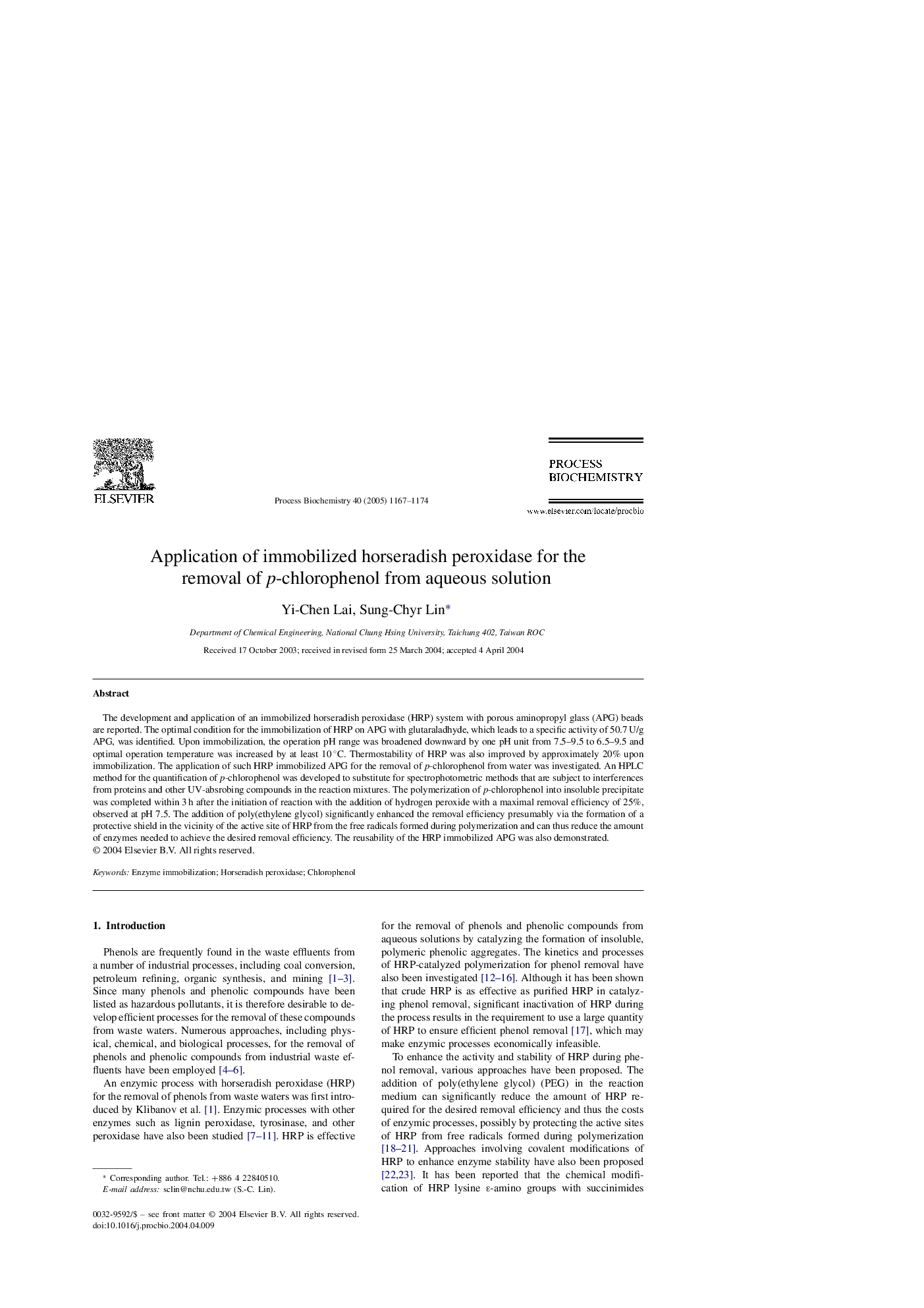| Article ID | Journal | Published Year | Pages | File Type |
|---|---|---|---|---|
| 9607682 | Process Biochemistry | 2005 | 8 Pages |
Abstract
The development and application of an immobilized horseradish peroxidase (HRP) system with porous aminopropyl glass (APG) beads are reported. The optimal condition for the immobilization of HRP on APG with glutaraladhyde, which leads to a specific activity of 50.7 U/g APG, was identified. Upon immobilization, the operation pH range was broadened downward by one pH unit from 7.5-9.5 to 6.5-9.5 and optimal operation temperature was increased by at least 10 °C. Thermostability of HRP was also improved by approximately 20% upon immobilization. The application of such HRP immobilized APG for the removal of p-chlorophenol from water was investigated. An HPLC method for the quantification of p-chlorophenol was developed to substitute for spectrophotometric methods that are subject to interferences from proteins and other UV-absrobing compounds in the reaction mixtures. The polymerization of p-chlorophenol into insoluble precipitate was completed within 3 h after the initiation of reaction with the addition of hydrogen peroxide with a maximal removal efficiency of 25%, observed at pH 7.5. The addition of poly(ethylene glycol) significantly enhanced the removal efficiency presumably via the formation of a protective shield in the vicinity of the active site of HRP from the free radicals formed during polymerization and can thus reduce the amount of enzymes needed to achieve the desired removal efficiency. The reusability of the HRP immobilized APG was also demonstrated.
Related Topics
Physical Sciences and Engineering
Chemical Engineering
Bioengineering
Authors
Yi-Chen Lai, Sung-Chyr Lin,
